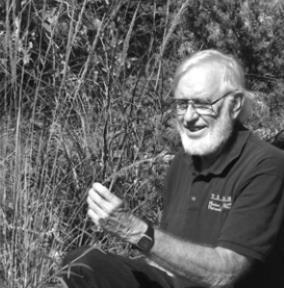Winter is Coming
In spite of our recent cold spell, it is still a few weeks before winter officially arrives. The two times of the year that show the greatest changes in the local landscape are the beginning of winter and the beginning of spring. As humans, we tend to view the former with dread and the latter with hope and enthusiasm. Mother Nature views it all as part of the process of life on Earth.
For deciduous trees and shrubs and other perennial plants, losing their leaves and becoming dormant is just their way of coping with freezing weather and preparing for spring. Annuals have produced seeds that will survive the winter and begin a new generation in the spring. Even evergreens cease growing although their leaves are capable of surviving sub-freezing temperatures.
Some animals hibernate. Many animals in this part of the country don’t actually hibernate, but may remain in burrows or nests during the more severe winter storms. Some of our birds fly south for the winter, but then other birds migrate from the north to spend winter with us. Most insects die in late fall but leave behind eggs, larva or cocoons, but some adult insects actually live over the winter in a dormant state, some underground and some just curled up in vegetation or leaf litter.
Winter of course brings us humans lots of outdoor chores. My philosophy on this is simple: grow native plants that have always been here, and think about what happened to them during all those winters before we got here. Nobody raked the leaves from under the trees and out in the woods, even today, no one does. So why do we consider that such an essential activity? I admit that a pile of leaves on non-native turf grasses might not be good for the lawn, but leaves falling in flower beds or scattered over the native grasses is just mulch for the winter and organic matter to be mixed into the soil later.
Mother Nature doesn’t cut the seed heads off grasses, wildflowers or perennials during the fall either, but leaves the seeds for the birds and small mammals when there is little else to eat. Mother Nature doesn’t mow the native grasses short either, but lets the taller grass and the leaf litter to cover the ground, reducing evaporation and protecting the soil microorganisms.
Winter is a stressful time for most all animals, because not only is it cold out, but there is generally less food available. About the only protection many species of wildlife have during the winter are evergreen trees and shrubs, and yes, that includes cedar. So protecting or planting some native evergreen shrubs will be appreciated by the wildlife.
Maintaining bird feeders throughout the winter is certainly important, and even more so if there aren’t many native sources of seeds nearby. Insecteating birds are particularly affected in the winter and have to switch to berries. If you don’t have berry-producing shrubs around, you might consider providing suet or fruit as possible food for these birds.
One thing that some folks don’t think about is the need wildlife have for water in the winter. Our coldest spells tend to also be the driest, so small birds and animals can easily become dehydrated. And it is also usually at those times when many people’s bird baths are frozen. So if you can work to provide fresh water on those mornings, your feathered friends will appreciate it.
On a recent cold morning, my wife watched birds coming and going from our small recirculating stream in the backyard and said, “It looks like the air traffic around Houston Intercontinental Airport.” Sometimes water is more important than food.
We have on occasion had a very few hummingbirds overwinter here, and they seem to really appreciate our feeder since little else is blooming in the winter. We have also been amazed to see sulfur butterflies out and about even after Christmas on warm afternoons. You have to wonder, how can those little things survive the cold nights we have had? But then, monarch butterflies winter in the high mountains of Mexico after migrating from Canada, and they will be back in Texas to lay eggs in the spring! It makes me feel just a little guilty when I complain that the thermostat is set too low!
So bundle up, and go out and enjoy the natural world, even in winter. Until next time…
There will be two more oneon-one nature visits this year: November 13 and 20, all at Riverside Nature Center from 10 a.m. to 12 noon. I expect the visits to resume in warmer weather.
Jim Stanley is a Texas Master Naturalist and the author of the books “Hill Country Ecology,” “Hill Country Landowner’s Guide” and “A Beginner’s Handbook for Rural Texas Landowners.” He can be reached at <jstmn@ktc.com>. Previous columns can be seen at <www.hillcountrynaturalist.org>.

